Musique
traditionnelle chinoise et le rencontre avec des
traditions africaines,
arabes, et indiennes
Le Son de Soie
Liu Fang (pipa, guzheng), Alla (oud), Ballake Sissoko (Kora),
Henri Tournier (Bansuri)
Label: Accords Croises / Harmonia
Mundi | AC116 | released in 2006
|
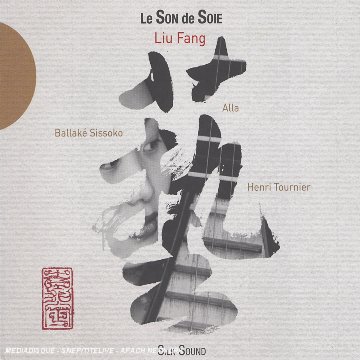
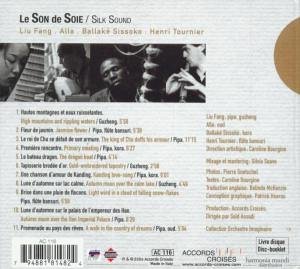
 le
prix de le
prix de
L'Académie Charles Cros, 2006 |
[English]


|
| sélectionné
comme l'un des Le
meilleur des musiques du monde de l'année 2006
par Le
Devoir !
"Un
beau disque de musique chinoise, paru cette année,
a récemment été récompensé
par l’Académie Charles Cros ... "
"...
la Route de la soie. .... Ainsi le “pipa”,
dont joue avec une grâce irréelle la jeune
virtuose chinoise Liu Fang, est-il une adaptation du
luth perse “barbât” également
présent au Vietnam (“dan ty ba”)
ou au Japon (“biwa”). A l’origine,
ses cordes étaient en fil de soie. Bien que modernisé
l’instrument conserve sous les doigts de la musicienne
une sonorité propre à traduire l’essence
poétique de partitions dont l’énoncé
suffit ici à suggérer l’infinie
délicatesse : Promenade au pays des rêves,
Brise dans une pluie de coton… De l’autre
instrument traditionnel joué par Liu Fang sur
ce disque, la cithare “guzheng”, émane
le même trouble impalpable, la même subtilité
d’évocation. Le charme opère d’autant
mieux que Liu Fang fraternise sur une moitié
d’album avec des musiciens venus d’horizons
différents : le joueur de kora malien Ballaké
Sissoko, le flûtiste français maître
du “bansuri” indien Henri Tournier, le oudiste
algérien Alla. Chaque rencontre produit un vertige
esthétique comparable à ce qu’expriment
les peintures bouddhistes. Toutes nous projettent au-delà
des sentiments, de la colère, de la joie ou de
la douleur, et nous rapprochent d’une source de
sérénité universelle." - Les Inrockuptibles,
2006
plus de revue de presse
|
|
| Les
pièces
- Haute
montagnes et eaux ruisselantes
(Guzheng solo, tradition classique)
- Fleur
de jasmin (guzheng et bansuri)
- Le
roi de Chu se défait de son armure (pipa solo,
tradition
classique)
- Première
rencontre (pipa et kora)
- Le
bateau dragon (pipa solo)
- Tapisserie
brodée d'or (guzheng solo)
- Une
chanson d'amour de Kangding (pipa et kora)
- Lune
d'autumne sur lac calme(guzheng solo, tradition
classique)
- Brise
dans une pluie de flocons (pipa and bansuri)
- Lune
d'autumne sur le palais de l'empereur des Han (pipa solo,
tradition
classique)
- Promenade
au pays des rêves (pipa et oud)
|
CD
review in Mondomix,
France
Ever
since Liu Fang left China for western climes she has opened up
her classical pipa repertory to other traditions. In Berlin her
exchange with Syrian ‘oudist Farhan Sabbagh resulted in
Fang’s second release “Arabic and Chinese music”.
One critic wrote the following: “It is satisfying to hear
a group of instruments together, the way they relate, take turns,
complement each other. These are master musicians at work, indeed."
Similar words can be uttered over “Le Son de Soie”,
a delicately embroidered album that reveals a remarkable cogency
between instruments worlds apart. The West African kora of Ballaké
Sissoko, the ‘oud played by Alla of Algeria, and Henry Tournier’s
bansuri flute, are in perfect symbiosis with Fang’s pipa
and guzheng.
“I
sensed keenly (sic.) her awakening to other forms of music,”
explains Tournier in the elaborate sleeve notes, “During
our improvisation sessions it became clear that it was the bansuri
flute…which pleased her most and could respond best to her
own musicality.” The osmosis does indeed appear complete
in “Light wind in a cloud of falling snow-flakes,”
yet it would be a disservice to the other virtuosic musicians
on the album to claim they have come out second-best.
Mali’s Sissoko, in particular, complements Fang’s
refined strumming of the pipa, this lute with some 2,000 years
of history behind it. In the appropriately named “Première
rencontre”, his kora gels with her pipa so gracefully that
one wonders if they do not share a common heritage down the millenia.
The plectra on Fang’s fingertips alternate between power
and delicacy throughout the song, as she displays a technique
rarely surpassed elsewhere. It echoes the words of a ninth century
sage, quoted in the sleeve notes by Caroline Bourgine: “The
stronger strings resonate like a sudden shower of rain, the finer
ones like a suppressed sigh.”
Fang proves to be equally adept on the guzheng, this plucked,
half-tube zither with 21 strings. The emotion she invests in this
instrument of Persian origin transpires in each note: “As
she plays her zither, attacking and biting into the strings with
her right hand, she consciously replicates the actions and body
movements of a fish or bird,” Bourgine notes. This proximity
with nature and its animals underscores the spirit of this tranquil
and flowing album. Improvisations and spontaneity between the
four master musicians never supersede a harmony that seems engraved
in the marbles of time. This is a CD to meditate over, and with.
May 2006
Daniel Brown
See
also press reviews from:


|
|
|
Discographies

Solo
albums
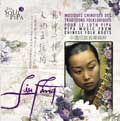
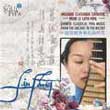
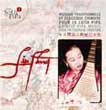
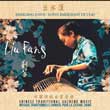
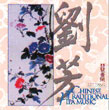
Collaborations
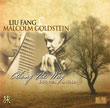
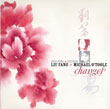
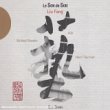
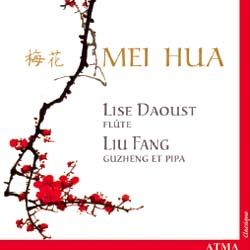
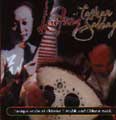
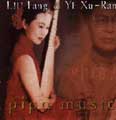
|

|



